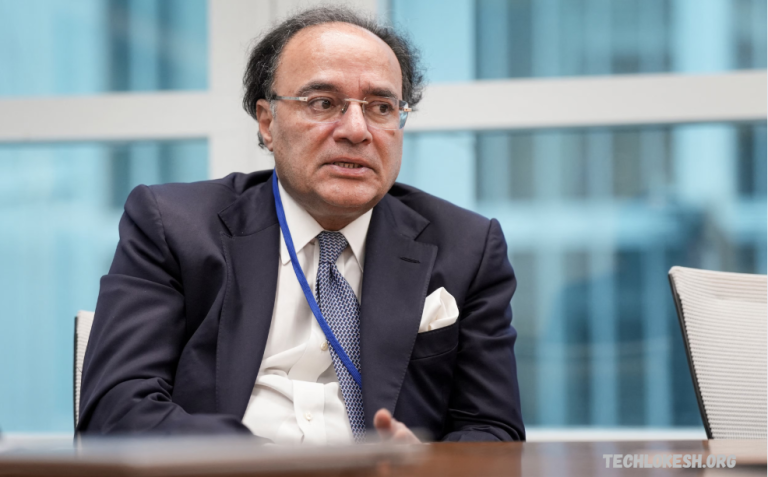Finance Minister Aurangzeb is accelerating efforts to finalize a pivotal trade agreement with the United States, a move seen as a crucial step toward stabilizing and revitalizing Pakistan’s economy. With the nation facing ongoing economic challenges—including inflation, a weakening currency, and shrinking foreign reserves—the trade deal represents a significant opportunity to unlock fresh avenues for growth, investment, and export expansion.
The urgency behind this push is not just strategic, but essential. By strengthening trade ties with one of the world’s largest economies, Pakistan aims to secure better market access, enhance investor confidence, and reduce its reliance on debt-driven solutions. FM Aurangzeb’s recent diplomatic engagements signal a focused and pragmatic approach to economic diplomacy, where mutually beneficial trade stands at the center of long-term recovery.
Industry leaders and policy analysts alike see this initiative as a timely and necessary shift toward sustainable economic partnerships. As discussions enter their final stages, expectations are high that the deal will deliver tangible benefits across sectors—especially in textiles, agriculture, and IT. The clock is ticking, but FM Aurangzeb’s resolve reflects a broader national effort to chart a more stable and prosperous economic future through strategic international collaboration.
Importance of the US Trade Deal for Economic Growth
The proposed trade deal between Pakistan and the United States holds significant importance for Pakistan’s economic growth and long-term stability. As one of the world’s largest and most influential economies, the U.S. offers Pakistan a valuable opportunity to expand its exports, attract investment, and strengthen its global trade relationships.
Enhanced access to U.S. markets could boost key Pakistani industries such as textiles, agriculture, and technology, helping them grow beyond traditional boundaries. This would not only increase foreign exchange earnings but also create jobs, support local businesses, and drive industrial innovation. At a time when Pakistan is grappling with fiscal pressure, a strong trade partnership can act as a catalyst for economic resilience.
Moreover, the deal has the potential to attract U.S.-based companies looking to diversify their supply chains, positioning Pakistan as a viable regional hub for manufacturing and services. Strengthening economic ties with the U.S. also sends a positive signal to global markets, which could improve investor confidence and support future bilateral cooperation.
Key Objectives of the Trade Deal
- Boost Export Growth
One of the primary goals is to expand Pakistan’s access to U.S. markets, especially for key sectors like textiles, agriculture, and technology. This would help increase export volumes, generate foreign exchange, and reduce the trade deficit. - Attract Foreign Investment
By strengthening trade relations with the U.S., Pakistan aims to create a more attractive environment for American investors. The deal is expected to promote joint ventures, technology transfer, and capital inflows. - Strengthen Economic Stability
Diversifying trade partners and securing long-term agreements can help stabilize Pakistan’s economy. Reduced dependency on aid and debt will contribute to more sustainable growth. - Enhance Industrial Competitiveness
Access to U.S. technology, standards, and supply chains will help Pakistani industries improve quality, productivity, and global competitiveness. - Create Employment Opportunities
With greater export demand and foreign investment, the deal is likely to generate new jobs across various sectors, particularly in manufacturing and services. - Improve Bilateral Relations
Beyond economics, the trade deal aims to strengthen diplomatic and strategic ties between Pakistan and the United States, fostering long-term cooperation.
These objectives reflect a comprehensive approach to driving economic growth through mutually beneficial international trade.
Potential Benefits for Various Sectors
- Textile and Apparel
As Pakistan’s leading export sector, textiles stand to gain the most. Easier access to U.S. markets could result in increased orders, better pricing, and stronger global positioning. It could also encourage modernization and compliance with international standards. - Agriculture and Food Processing
The trade deal could open doors for Pakistani fruits, rice, spices, and processed food products to reach U.S. consumers. This would not only boost rural incomes but also support the development of agro-industries and value-added processing. - Information Technology and Services
With demand for IT outsourcing and digital services growing in the U.S., Pakistan’s tech sector could benefit from increased collaboration, exports of software services, and entry of American tech companies into the local market. - Pharmaceuticals and Healthcare
Enhanced regulatory cooperation could allow Pakistani pharmaceutical companies to export generic medicines to the U.S., opening up a high-value market and encouraging investments in quality and innovation. - Manufacturing and Engineering
Greater trade could encourage U.S. companies to source parts or set up assembly lines in Pakistan, strengthening local manufacturing and creating skilled jobs. - Logistics and Infrastructure
As trade volumes grow, demand for better logistics, warehousing, and transport services will rise—benefiting local infrastructure developers and service providers.
This sector-wise uplift could contribute significantly to job creation, GDP growth, and Pakistan’s integration into global value chains.
Read Also: Cabinet Okays 15% Hike in EOBI Pensions
Challenges and Concerns Surrounding the Trade Deal
While the US-Pakistan trade deal holds great promise, it also comes with a set of challenges and concerns that must be carefully addressed to ensure its success. One of the major concerns is the risk of stringent U.S. regulatory and compliance requirements. Many Pakistani exporters, especially small and medium-sized enterprises, may struggle to meet the high standards related to quality control, labor laws, and environmental regulations demanded by the U.S. market. Without proper support and capacity building, these barriers could limit the benefits of the agreement for a significant portion of local businesses.
Another key challenge is the potential for economic imbalance. There is a concern that the deal might favor U.S. companies more than their Pakistani counterparts, especially if market access is not evenly negotiated. This could lead to an influx of American goods in domestic markets, putting pressure on local industries that are not yet ready to compete on a global scale.
Political uncertainty and bureaucratic inefficiencies in Pakistan also pose a risk. Timely implementation of reforms, transparent policymaking, and consistent regulatory frameworks will be crucial to maintain U.S. confidence and sustain long-term cooperation. Additionally, external factors such as shifting U.S. foreign policy priorities or changes in trade leadership could impact the pace and scope of the deal.
Comparison with Previous Trade Deals
The proposed US-Pakistan trade deal marks a significant shift in both ambition and strategy compared to previous trade agreements Pakistan has entered into. Historically, Pakistan’s trade deals—such as those with China under the China-Pakistan Free Trade Agreement (CPFTA) or with regional partners under the South Asian Free Trade Area (SAFTA)—have focused primarily on tariff reductions and boosting exports within specific product categories. While these agreements have offered certain benefits, they have often been criticized for creating trade imbalances, limited diversification, and inadequate gains for Pakistan’s domestic industries.
Unlike earlier deals, the proposed agreement with the United States is expected to take a broader and more structured approach. It not only aims to improve market access but also emphasizes regulatory cooperation, technology transfer, and long-term investment partnerships. This aligns more closely with modern trade practices that go beyond goods and focus on services, digital trade, intellectual property, and environmental standards.
Moreover, previous trade deals often lacked robust monitoring mechanisms and enforcement provisions, leading to mixed results. In contrast, a deal with the U.S. is likely to include detailed benchmarks and accountability frameworks, pushing Pakistan to raise its compliance levels and institutional transparency.
Frequently Asked Questions
How soon could the trade deal come into effect?
Timelines depend on the completion of negotiations, legal approvals, and implementation of agreed reforms; it may take several months to a year.
What role does the private sector play in this deal?
The private sector will be crucial in meeting export standards, scaling production, and attracting investment.
Will the deal include provisions for technology transfer?
Yes, one objective is to encourage technology sharing and collaboration to improve Pakistan’s industrial competitiveness.
How will the deal impact consumers in Pakistan?
Increased trade and investment could lead to better quality products and potentially lower prices, though some domestic industries might face competition.
What measures are being taken to address concerns over regulatory compliance?
Capacity building, technical assistance, and institutional reforms are planned to help exporters meet U.S. standards and maintain long-term trade benefits.
Conclusion
The US-Pakistan trade deal represents a vital opportunity for Pakistan to strengthen its economy through increased exports, foreign investment, and deeper international cooperation. While the path to finalizing the agreement comes with challenges—including regulatory hurdles and the need for domestic reforms—the potential benefits across key sectors like textiles, agriculture, and technology are substantial. Successfully navigating these challenges will require focused government action, private sector involvement, and a commitment to maintaining balanced trade relations. If achieved, this trade deal could play a crucial role in driving sustainable economic growth, creating jobs, and positioning Pakistan as a competitive player in the global market. Ultimately, it is a strategic step toward building a more resilient and prosperous economic future for the country.

